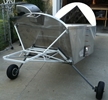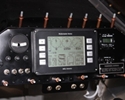


random user submitted photo
Pre-Heat
42 posts
• Page 3 of 5 • 1, 2, 3, 4, 5
Re: Pre-Heat
I saw a homemade one on the internet or in Kitplanes or something. Somebody took one of those ice melter torches, mounted it inside a metal coffee can with the bottom cut out, and hooked that to 3 or 4 feet of metal flex ducting. Seems like a handy person could do something similar. I imagine the red dragon has similar precautions needed to prevent fire.
Edit:
http://flykr2s.com/preheater.html
http://maulepilots.org/forums/viewtopic ... b4dc84affe
The one I remember but can't find used one of these, ducting, and an air gap:
http://www.northerntool.com/shop/tools/ ... _200584783
Edit:
http://flykr2s.com/preheater.html
http://maulepilots.org/forums/viewtopic ... b4dc84affe
The one I remember but can't find used one of these, ducting, and an air gap:
http://www.northerntool.com/shop/tools/ ... _200584783
Bryan Cotton
Poplar Grove, IL C77
Waiex 191 N191YX
Taildragger, Aerovee, acro ailerons
dual sticks with sport trainer controls
Prebuilt spars and machined angle kit
Year 2 flying and approaching 200 hours December 23
Poplar Grove, IL C77
Waiex 191 N191YX
Taildragger, Aerovee, acro ailerons
dual sticks with sport trainer controls
Prebuilt spars and machined angle kit
Year 2 flying and approaching 200 hours December 23
-

Bryan Cotton - Posts: 5496
- Joined: Mon Jul 01, 2013 9:54 pm
- Location: C77
Re: Pre-Heat
kmacht wrote:The cheapest non 110v option at Spruce is the red dragon at almost $500. There has to be something out there less expensive.
Keith
#554
Oh, that's right. You said inexpensive :-) Hmmm... Doing a Google search for home made pre-heaters I found lots of non-electric ideas:
https://www.youtube.com/watch?v=_5bK_ivwXs4
https://www.youtube.com/watch?v=x2XToAb-lTs
http://www.eaa.ca/experimenter/articles ... heater.asp
http://marty.rob.com/flying/preheater/preheat.shtml
http://flykr2s.com/preheater.html
http://maulepilots.org/forums/viewtopic ... b4dc84affe
http://www.zenith.aero/profiles/blogs/t ... -preheater
Mike Smith
Sonex N439M
Scratch built, AeroVee, Dual stick, Tail dragger
http://www.mykitlog.com/mikesmith
Sonex N439M
Scratch built, AeroVee, Dual stick, Tail dragger
http://www.mykitlog.com/mikesmith
- mike.smith
- Posts: 1430
- Joined: Tue Jan 29, 2013 8:45 pm
Re: Pre-Heat
Depending if your hangar is close enough for WIFI or can use a WIFI extender with a cantenna to stretch out to a few km. WIFI switches are available for about 50 bucks. Most small airports have wifi. Grass strips are usually close enough and even remote hangars can reach an AP miles away with a good antenna.
But gas systems are another ball of wax.
But gas systems are another ball of wax.
SNX-794. Formerly SNX-1542
- Sonex1542
- Posts: 53
- Joined: Wed Sep 21, 2011 12:09 am
- Location: Reno, NV
Re: Pre-Heat
One winter day I used a length of dryer hose connected to the exhaust pipe of my truck to warm the engine. This worked...sorta. Along with the warm exhaust there is a lot of water vapor, so the engine compartment was dripping water after a half hour. Didn't seem to cause any problem as the engine started up and ran OK.
- radfordc
- Posts: 573
- Joined: Fri Jun 03, 2011 9:39 am
Re: Pre-Heat
radfordc wrote:One winter day I used a length of dryer hose connected to the exhaust pipe of my truck to warm the engine. This worked...sorta. Along with the warm exhaust there is a lot of water vapor, so the engine compartment was dripping water after a half hour. Didn't seem to cause any problem as the engine started up and ran OK.
I tried that with a Tesla and it didn't warm the engine one bit!
:lol:
Mike Smith
Sonex N439M
Scratch built, AeroVee, Dual stick, Tail dragger
http://www.mykitlog.com/mikesmith
Sonex N439M
Scratch built, AeroVee, Dual stick, Tail dragger
http://www.mykitlog.com/mikesmith
- mike.smith
- Posts: 1430
- Joined: Tue Jan 29, 2013 8:45 pm
Re: Pre-Heat
radfordc wrote:One winter day I used a length of dryer hose connected to the exhaust pipe of my truck to warm the engine. This worked...sorta. Along with the warm exhaust there is a lot of water vapor, so the engine compartment was dripping water after a half hour. Didn't seem to cause any problem as the engine started up and ran OK.
That will be the same thing that happens with any combustion heater if the exhaust is vented into that cold engine compartment. Lots of warm H2O vapor hitting that cold engine, cowl, wires, etc= lots of condensation.
Mark Waldron
Sonex 1230 (Builder: Jay Gibbs)
Aerovee, Trigear
Sonex 1230 (Builder: Jay Gibbs)
Aerovee, Trigear
- vigilant104
- Posts: 265
- Joined: Wed Nov 09, 2011 3:34 pm
- Location: Near Dayton, OH
Re: Pre-Heat
These heating pads work really well. The 700 watt pad I got as a test gets really hot. Like 400 degrees or more. The next ones I ordered are lower wattage.
http://www.amazon.com/gp/product/B007PA ... UTF8&psc=1
For the 700 watt pad I bought this small AC rheostat
http://www.amazon.com/gp/product/B00JJC ... UTF8&psc=1
and hooked it up in-line to the pad and now I can control the temp. I have a laser thermometer so I can get a rough temperature calibration. I'm going to give it a try tomorrow. The final plan will be to put this one under the oil sump, and one each of the lower wattage pads over each set of cylinders.
So here is a question: what would be an appropriate temperature for several hours? Or just a not-to-exceed temperature? Specifically, I'm thinking I would not want to "cook" the oil in the sump or burn the oil on the cylinders and pistons.
http://www.amazon.com/gp/product/B007PA ... UTF8&psc=1
For the 700 watt pad I bought this small AC rheostat
http://www.amazon.com/gp/product/B00JJC ... UTF8&psc=1
and hooked it up in-line to the pad and now I can control the temp. I have a laser thermometer so I can get a rough temperature calibration. I'm going to give it a try tomorrow. The final plan will be to put this one under the oil sump, and one each of the lower wattage pads over each set of cylinders.
So here is a question: what would be an appropriate temperature for several hours? Or just a not-to-exceed temperature? Specifically, I'm thinking I would not want to "cook" the oil in the sump or burn the oil on the cylinders and pistons.
Mike Smith
Sonex N439M
Scratch built, AeroVee, Dual stick, Tail dragger
http://www.mykitlog.com/mikesmith
Sonex N439M
Scratch built, AeroVee, Dual stick, Tail dragger
http://www.mykitlog.com/mikesmith
- mike.smith
- Posts: 1430
- Joined: Tue Jan 29, 2013 8:45 pm
Re: Pre-Heat
Great question Mike. I'm certainly no expert on fluid dynamics, but from what I've read, the main goal is to have the oil warm enough that it can easiliy flow through the narrow oil passages, thus allowing for good bearing lubrication as soon as you fire up the engine. For us this may also help prevent a pressure overboost when we start a cold engine with cold, thick oil in the sump.
In most cases, having the oil up to 100 degrees is certainly sufficient so if it were me, I think that would be my goal. I'd try to determine what heat is needed so that the oil could slowly be warmed up to around 100-120 degrees after several hours. Oil viscosity is quite different at 100 as compared to freeing temps!
In most cases, having the oil up to 100 degrees is certainly sufficient so if it were me, I think that would be my goal. I'd try to determine what heat is needed so that the oil could slowly be warmed up to around 100-120 degrees after several hours. Oil viscosity is quite different at 100 as compared to freeing temps!
Mike Farley
Waiex #0056 - N569KM (sold)
Onex #245
Waiex #0056 - N569KM (sold)
Onex #245
- MichaelFarley56
- Posts: 1485
- Joined: Thu Jun 02, 2011 11:38 pm
- Location: Columbus, Ohio
Re: Pre-Heat
MichaelFarley56 wrote:Great question Mike. I'm certainly no expert on fluid dynamics, but from what I've read, the main goal is to have the oil warm enough that it can easiliy flow through the narrow oil passages, thus allowing for good bearing lubrication as soon as you fire up the engine. For us this may also help prevent a pressure overboost when we start a cold engine with cold, thick oil in the sump.
In most cases, having the oil up to 100 degrees is certainly sufficient so if it were me, I think that would be my goal. I'd try to determine what heat is needed so that the oil could slowly be warmed up to around 100-120 degrees after several hours. Oil viscosity is quite different at 100 as compared to freeing temps!
The oil is what I used to think, until I read this, which makes all the sense in the world to me:
http://www.avweb.com/news/maint/182846- ... directed=1
That's why I'm planning to add these heaters across the cylinders as well as under the oil sump.
I dropped Sonex an email this weekend to see if they had any insight.
Mike Smith
Sonex N439M
Scratch built, AeroVee, Dual stick, Tail dragger
http://www.mykitlog.com/mikesmith
Sonex N439M
Scratch built, AeroVee, Dual stick, Tail dragger
http://www.mykitlog.com/mikesmith
- mike.smith
- Posts: 1430
- Joined: Tue Jan 29, 2013 8:45 pm
Re: Pre-Heat
mike.smith wrote:The oil is what I used to think, until I read this, which makes all the sense in the world to me:
http://www.avweb.com/news/maint/182846- ... directed=1
That's why I'm planning to add these heaters across the cylinders as well as under the oil sump.
I dropped Sonex an email this weekend to see if they had any insight.
Good article, thanks. As he says:
Consider your steel crankshaft, which is suspended by thin bearing shells supported by a cast aluminum crankcase. As the engine gets colder, all of its parts shrink in size, but the aluminum case shrinks twice as much as the steel crankshaft running through it. The result is that the colder the temperature, the smaller the clearance between the bearing shells and the crankshaft. That clearance is where the oil goes to lubricate the bearings and prevent metal-to-metal contact. If there's not enough clearance, then there's no room for the oil, regardless how high the oil pressure gauge reads.
The sump and cylinder point heaters may not get the crankcase warm, and some of the pistons will be inside the (warm) cylinders while others largely won't be. Warm air blown up into the cowl would seem to get everything up to the same temperature (as if the plane had been in a heated hangar) . . . and it's cheap. Just a thought.
Mark Waldron
Sonex 1230 (Builder: Jay Gibbs)
Aerovee, Trigear
Sonex 1230 (Builder: Jay Gibbs)
Aerovee, Trigear
- vigilant104
- Posts: 265
- Joined: Wed Nov 09, 2011 3:34 pm
- Location: Near Dayton, OH
42 posts
• Page 3 of 5 • 1, 2, 3, 4, 5
Who is online
Users browsing this forum: No registered users and 29 guests







